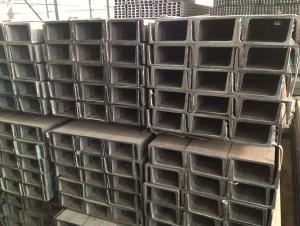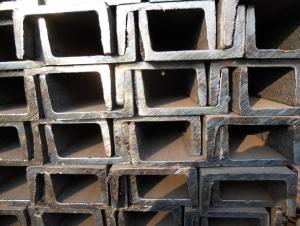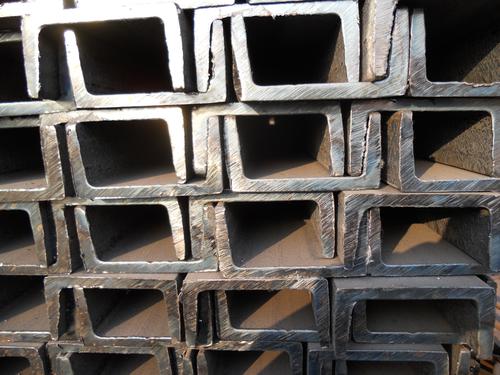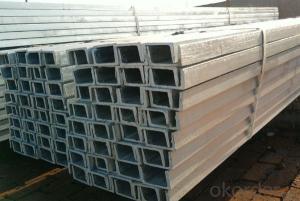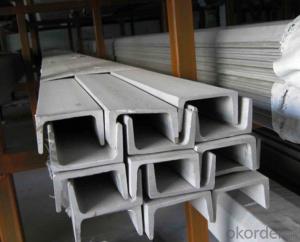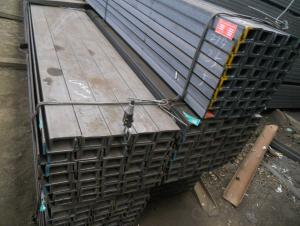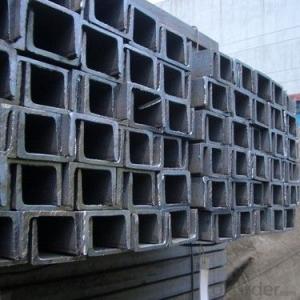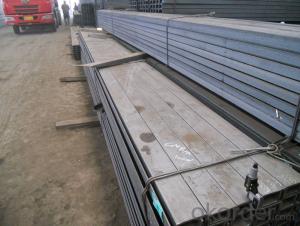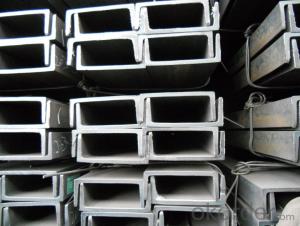JIS G3192.SS400 Steel Channel With High Quality
- Loading Port:
- China main port
- Payment Terms:
- TT or LC
- Min Order Qty:
- 25 m.t
- Supply Capability:
- 2000 m.t/month
OKorder Service Pledge
OKorder Financial Service
You Might Also Like
Product Description:
OKorder is offering JIS G3192.SS400 Steel Channel With High Qualityat great prices with worldwide shipping. Our supplier is a world-class manufacturer of steel, with our products utilized the world over. OKorder annually supplies products to European, North American and Asian markets. We provide quotations within 24 hours of receiving an inquiry and guarantee competitive prices.
Product Applications:
JIS G3192.SS400 Steel Channel With High Qualityre ideal for structural applications and are widely used in the construction of buildings and bridges, and the manufacturing, petrochemical, and transportation industries.
Product Advantages:
OKorder's JIS G3192.SS400 Steel Channel With High Qualityare durable, strong, and resist corrosion.
Main Product Features:
· Premium quality
· Prompt delivery & seaworthy packing (30 days after receiving deposit)
· Corrosion resistance
· Can be recycled and reused
· Mill test certification
· Professional Service
· Competitive pricing
Product Description:
Specifications of Hot Rolled Channel Steel:
1. We are definitely speciallizing in manufacturing and supplying channel steel as per japanese standard, which is characterised with high mechanical strength and competitive prices.
Original Place | Tangshan, China | Brand Name | UINDA |
Standard | JIS G3192 : 1990 | ||
Material Grade | SS540 | ||
Sizes | 50mm to 200mm | ||
Sales Volume/Year | 3000MT | ||
Destination Area | Middle East, Africa, Southeast Asia | ||
2. The mechanical property of Hot Rolled Channel Steel in the table-1:
Grade | Yield Strength,N/mm² | Extension Strength N/mm² | |||
Thickness of Steel,mm | |||||
≦16 | >16-≦40 | >40-≦100 | >100 | ||
SS540 | ≧400 | ≧390 | - | - | ≧540 |
Table-1
3. The chemical composition of Hot Rolled Channel Steel as per SS540 in the table-2
Grade | Yield Strength,N/mm² | Extension Strength N/mm² | |||
Thickness of Steel,mm | |||||
≦16 | >16-≦40 | >40-≦100 | >100 | ||
SS540 | ≧400 | ≧390 | - | - | ≧540 |
Table-2
Trade terms: FOB, CFR, CIF
FAQ:
Q1: Why buy Materials & Equipment from OKorder.com?
A1: All products offered byOKorder.com are carefully selected from China's most reliable manufacturing enterprises. Through its ISO certifications, OKorder.com adheres to the highest standards and a commitment to supply chain safety and customer satisfaction.
Q2: Can fit in the containers of 20fts the steel beams of 6M?
A2: No proble, we can put them into the containers in the form sideling.
Q3: The products are invoicing on theoritical weight or on actual weight?
A3: We can do it in both manners, according to the customers' request.
Images:
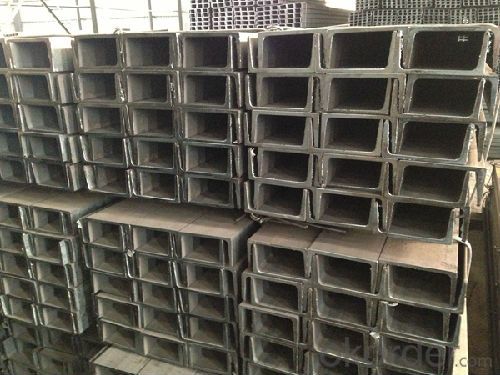
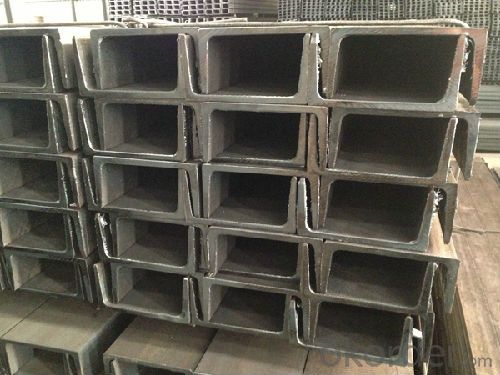
- Q: What are the different types of accessories available for steel channels?
- Steel channels have a variety of accessories that serve specific purposes and enhance their functionality. Some common accessories include: 1. Brackets: Used for additional support, especially when the channels are installed vertically or at an angle. Brackets maintain structural integrity and prevent sagging or bending. 2. End Caps: Cover the ends of channels for a clean and finished appearance. They also protect the edges from corrosion, moisture, and external elements. 3. Connectors: Join two or more channels together. Available in different shapes and sizes, such as straight, angle, and T-connectors, made of metal for a strong connection. 4. Mounting Hardware: Includes screws, bolts, and nuts to securely fasten channels to surfaces or structures, ensuring they can withstand intended loads. 5. Sliding Trolleys: Used when channels need to support movable loads or equipment. Allows smooth and easy movement along the channels for flexibility and convenience. 6. Cable Management Accessories: Facilitate cable management within channels. Examples include cable clamps, ties, trays, and routing fittings. Organize and secure cables for an efficient system. 7. Hangers and Supports: Used to suspend or hang channels from ceilings, walls, or other structures. Provide stability, especially for heavy loads. 8. Protective Coatings: Not accessories per se, but essential for enhancing durability and resistance to corrosion. Galvanization or powder coating protects against rust, moisture, and environmental factors. These are just a few examples of the accessories available for steel channels. Depending on specific applications, there may be additional accessories or variations to optimize performance and functionality.
- Q: How do steel channels contribute to the overall energy efficiency of a building?
- Steel channels can contribute to the overall energy efficiency of a building in several ways. Firstly, they offer structural support, allowing for the construction of taller and larger buildings with less material, reducing overall energy consumption during the construction phase. Additionally, steel channels are often used for insulation purposes, acting as thermal barriers to minimize heat transfer and improve the building's insulation efficiency. Furthermore, steel channels can be designed to accommodate wiring and plumbing systems, optimizing space utilization and reducing energy losses associated with long wire or pipe runs. Overall, steel channels play a crucial role in enhancing the energy efficiency of a building by providing strength, insulation, and efficient utility distribution.
- Q: What are the factors that affect the cost of steel channels?
- There are several factors that can affect the cost of steel channels. Firstly, the cost of raw materials is a significant factor. The price of steel, which is influenced by factors such as supply and demand, production costs, and global economic conditions, can have a direct impact on the cost of steel channels. Another factor that can affect the cost is the size and specifications of the steel channels. Larger and more specialized channels may require additional processing or customization, which can increase the cost. Additionally, the complexity of the design or the need for specific coatings or finishes can also impact the final cost. The manufacturing process also plays a role in determining the cost. Different production methods, such as hot-rolling or cold-forming, can have varying costs associated with them. Additionally, the location of the steel production facility and transportation costs can affect the overall price. Market conditions and competition can also influence the cost of steel channels. When there is high demand and limited supply, prices tend to increase. Conversely, during periods of low demand or increased competition, prices may decrease. Lastly, any additional services or value-added features, such as cutting, drilling, or welding, can add to the cost of steel channels. These services require additional labor, equipment, and expertise, which can increase the overall price. In conclusion, the cost of steel channels is influenced by various factors including raw material prices, size and specifications, manufacturing process, market conditions, competition, and additional services. Understanding these factors is crucial for businesses and consumers to make informed decisions when purchasing steel channels.
- Q: Channel 12, span 5 meters, how much weight can be carried?
- Check the ordinary channel capacity should be B (i.e. limited channel material can only bear much of the force, this is the state), because the common channel is Q235 type steel structure, the allowable stress of [b]=1400kg/c square meters
- Q: How do steel channels contribute to building adaptability?
- There are several ways in which the use of steel channels contributes to the adaptability of buildings. To begin with, steel channels play a crucial role in providing structural support and reinforcement. They are utilized in the construction of beams, columns, and trusses, which effectively distribute the weight of the building and ensure its stability. This structural strength allows for greater flexibility in building design and layout, as it permits the creation of larger open spaces and reduces the need for load-bearing walls. This adaptability is particularly important in modern building design, where there is a high demand for open floor plans and flexible spaces. Moreover, steel channels possess exceptional durability and resistance to various environmental factors. They can withstand extreme temperatures, high winds, and seismic activity, making them suitable for construction in diverse locations and climates. This durability is critical for building adaptability, as it guarantees that the structure can endure changes in environmental conditions and remain functional over an extended period. Additionally, steel channels are known for their ease of use and the ability to be easily modified or reconfigured. Their modular nature facilitates simple assembly, disassembly, and modification of building components. This flexibility allows for future expansion or modification of the building without the need for significant structural changes. It also enables the building to adapt to changing needs or functions, such as transforming a commercial office into a residential apartment. Furthermore, steel channels are highly recyclable, making them an environmentally sustainable choice for construction. They can be melted down and reused multiple times without compromising their structural integrity. This recyclability contributes to building adaptability by allowing for the reuse of steel components in different construction projects, reducing waste, and conserving resources. In conclusion, steel channels contribute significantly to the adaptability of buildings by providing structural support, durability, ease of modification, and recyclability. These qualities enable buildings to accommodate changing needs, layouts, and functions, making them versatile and adaptable over time.
- Q: What is the specific weight of 10# channel steel?
- Hot rolled light channel steel [(YB) 164-63]Height =100, leg width =46, waist thickness =4.5, average leg thickness =7.6, inner arc radius =7.0, leg end arc radius =3.0, sectional area (cm2) =10.9, theoretical weight (kg/m) =8.59
- Q: Are steel channels suitable for structural applications?
- Yes, steel channels are suitable for structural applications. They are commonly used in the construction industry for their strength, durability, and versatility. Steel channels provide structural support and are often employed in beams, columns, and other load-bearing structures.
- Q: What are the different types of support methods for steel channels?
- Depending on the application and structural needs, various support methods are available for steel channels. Some commonly used methods include: 1. Beam and column supports: Beams and columns can provide vertical support and distribute the weight of the steel channel. This method is frequently employed in building construction, where steel channels serve as structural components. 2. Hanging supports: Steel channels can be suspended using rods, cables, or chains. This method is suitable when the channel needs to be elevated or hung from a ceiling or overhead structure. 3. Bracket supports: Brackets fixed to a wall or other surface can offer lateral support and stability to steel channels, preventing bending or twisting under load. This method is popular in shelving systems or wall-mounted installations. 4. Channel supports: Steel channels can be supported by other channels, forming an interconnected support system. This approach is useful when multiple channels need to be joined to create a larger structure or framework. 5. Channel cleats: Channel cleats, metal brackets bolted or welded to the channel and then fixed to a supporting structure, can provide a secure and rigid connection. This method ensures a sturdy support for the channel. 6. Channel frames: Multiple channels can be connected to form a frame or structure, providing support for steel channels. This method is often used in applications like conveyor systems or equipment supports. In conclusion, the selection of a support method for steel channels should take into account factors such as the specific application, load requirements, and desired level of stability and rigidity. Professional engineers and designers should carefully consider these factors to choose the most suitable support method for their project.
- Q: How do steel channels compare to other structural materials like wood or concrete?
- There are multiple advantages that steel channels have over other structural materials such as wood or concrete. To begin with, steel channels exhibit superior strength and durability when compared to wood. Steel possesses a high tensile strength, enabling it to withstand heavy loads and pressures without bending or breaking. In contrast, wood is more susceptible to warping, rotting, and insect damage over time. Furthermore, steel channels provide greater design flexibility and versatility in comparison to concrete. Steel can be easily shaped and molded into various sizes and dimensions, allowing for the creation of intricate and complex designs. Conversely, concrete necessitates formwork and curing time, limiting the range of aesthetic options available. Additionally, steel channels possess a higher level of fire resistance when compared to both wood and concrete. Steel does not burn or contribute to the propagation of flames, making it a safer choice for structural applications. Wood is highly flammable and can quickly ignite, while concrete may crack or spall under extreme heat. Moreover, steel channels have a longer lifespan and require less maintenance in contrast to wood or concrete. Steel is resistant to weathering, corrosion, and pests, thereby reducing the need for regular repairs or replacements. Conversely, wood and concrete may necessitate regular sealing, painting, or patching to prevent deterioration. Lastly, steel channels offer superior sustainability and environmental benefits when compared to wood or concrete. Steel is a highly recyclable material, and utilizing recycled steel in construction reduces the need for new extraction. Additionally, steel structures can be disassembled and reused, minimizing waste. Wood requires the harvesting of trees, which can contribute to deforestation, while concrete production has a significant carbon footprint. In conclusion, steel channels excel over wood and concrete in terms of strength, durability, design flexibility, fire resistance, lifespan, maintenance, and sustainability. These advantages establish steel channels as the preferred choice for various structural applications.
Send your message to us
JIS G3192.SS400 Steel Channel With High Quality
- Loading Port:
- China main port
- Payment Terms:
- TT or LC
- Min Order Qty:
- 25 m.t
- Supply Capability:
- 2000 m.t/month
OKorder Service Pledge
OKorder Financial Service
Similar products
Hot products
Hot Searches
Related keywords
